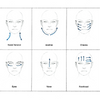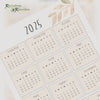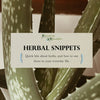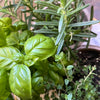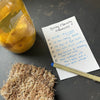Favorite Herbal Books for Reference

There is sooo much information Out There about herbs and their uses. And I do enjoy online sleuthing for information; you never know what you may learn along the way. However, many sites seem to be regurgitating the same information copied from other sources, and rarely do you see actual references to know how reliable the data is.
So how do you know what information is reliable and true? That's where a good reference book comes in handy. (Call me old-school for saying books are best, but they have been around for millennia...) Reference books are truly helpful because the information is backed by research, years of experience, and are peer-reviewed. A lot of thought and input goes into making a book, so you can trust that the information is more likely to be true.
Here's a list of MY favorite herbal reference books, and why I like them. I hope that you check them out for yourself, and let me know if you have any recommendations for me?
- Rosemary Gladstar's Medicinal Herbs, A Beginner's Guide written by Rosemary Gladstar
- Why I Like This Book: This was the first herbal book that I purchased for myself. Rosemary Gladstar is such an inspiration, and she really excels at reaching the everyday person. Her book focuses on commonly found herbs that are safe to use, and she offers many recipes to get you started. The content is very informative but not intimidating, and her writing style is graceful and welcoming. Truly delightful.
- More insight on this author can be found at: https://scienceandartofherbalism.com/shop/
- Practical Herbalism written by Philip Frichey
- Why I Like This Book: I love the way this book is laid out and organized, definitely a favorite. It has an extensive list of herbs, scientific and common names, and historical and botanical references to start. Then he takes it a step further into actions, systems affected, preparations and doses, and intended uses both internally and externally. And it has a huge appendix also. Really fantastic, and very practical.
- More insight on this author can be found at: https://hisgoodherbs.com/
- The Modern Herbal Dispensatory: A Medicine Making Guide by Thomas Easley and Steven Horne
-
Why I Like This Book: I like to have an herbal reference book nearby when I'm formulating new products, but many of them were not convenient at my lab bench because they had to be held or weighted down because they would fold close. And then I found this book with its compact size and spiral binding that lays so nice and flat - it was love at first sight.
The first part of the book has a lot of information on techniques and extraction methods that aren't quite so commonly discussed. The second part of the book gets into single herbs. The authors included many herbs that I didn't see commonly listed elsewhere, and included many TCM herbs too. They keep it brief and to the point in their herbal descriptions, which is helpful.
- More insight on these authors can be found at: https://eclecticschoolofherbalmedicine.com/ and https://stevenhorne.com/
-
Nutritional Herbology: A Reference Guide to Herbs by Mark Pedersen
- Why I Like This Book: This book is very unique, and really opened my eyes about the nutritional content of herbs. The book starts off with on how plants are both food and medicine, and he then goes in to a very interesting breakdown of various nutrients in herbs and foods. For each of the major and minor single herbs discussed, he includes their medicinal properties and nutritional profile. Taking it a step further, bodily systems are discussed with various herbal combination formulas for deficient and excess conditions. It's a really interesting book for herbal formulation based on nutrition.
- More insight on this author can be found at: https://www.linkedin.com/in/mark-pedersen-8733a8101
- The Herbal Apothecary by J.J. Pursell
- Why I Like This Book: I like this book particularly because it includes information on many herbs that are not included in other herbal books. She knows lavender and chamomile been covered in most books, so she's included more unusual plants, mushrooms and trees. The format is nicely arranged and visually appealing, and there are also cultivation instructions with each herb. There's also a lot of background information on anatomy and physiology; knowledge that is needed to formulate products that do what you intend them to do. I'm looking forward to reading a few more of her books.
- More insight on this author can be found at: https://www.drjjpursell.com/home

